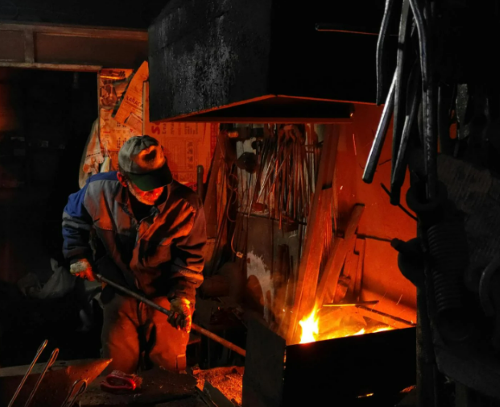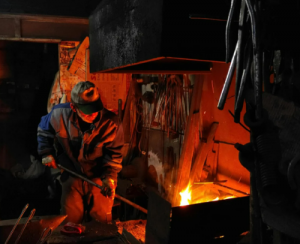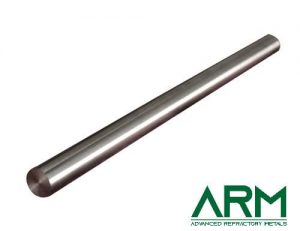Molybdenum-based High-temperature Alloys: TZM vs MHC

Introduction
In the realm of materials science, the quest for alloys capable of withstanding extreme temperatures without compromising their structural integrity is relentless. Among these materials, molybdenum-based high-temperature alloys stand out for their exceptional performance.

This article focuses on two prominent molybdenum alloys: TZM (Titanium-Zirconium-Molybdenum) and MHC (Molybdenum-Hafnium-Carbon), comparing their compositions, properties, applications, and suitability for various high-temperature environments.
Composition and Manufacturing
Molybdenum comes with a high melting point (2623°C), inherent strength, and resistance to thermal creep, so it serves as an excellent base for high-temperature alloys. By alloying molybdenum with other elements, its properties can be significantly enhanced to meet specific needs.

- TZM Alloy is a more common molybdenum alloy, consisting of 0.5% Titanium, 0.08% Zirconium, and 0.02% Carbon. These additions refine the grain structure and substantially increase the material's strength, especially at temperatures up to 1400°C.
- MHC Alloy, on the other hand, includes 1-2% Hafnium and a similar carbon content to TZM. Hafnium's inclusion improves the alloy's high-temperature capabilities, offering superior performance in environments exceeding 1400°C.
Mechanical Properties
Understanding the mechanical properties of TZM and MHC alloys is crucial for selecting the right material for specific high-temperature applications. Here, let’s continue to learn about key mechanical properties that distinguish these two alloys:

- High-Temperature Strength: Both TZM and MHC exhibit remarkable strength at elevated temperatures. TZM's reinforced structure ensures stability and durability up to 1400°C, making it an ideal choice for many high-temperature applications. MHC shines in even more extreme conditions, where its enhanced composition maintains strength and creep resistance beyond the limits of TZM.
- Creep Resistance: Essential for materials subjected to high stress at elevated temperatures, creep resistance determines the longevity and reliability of components. MHC's alloying elements provide it with an edge in creep resistance at temperatures above 1400°C, while TZM offers significant resistance up to this threshold.
- Thermal Conductivity: High thermal conductivity is crucial for applications requiring efficient heat dissipation. TZM's slightly superior thermal conductivity makes it suitable for applications where maintaining a uniform temperature or avoiding hotspots is critical.
- Oxidation Resistance: Both alloys exhibit excellent oxidation resistance, but MHC's composition allows it to better withstand oxidative environments at higher temperatures, extending the life of components exposed to such conditions.
Applications
The distinct properties of TZM and MHC alloys make them suitable for various applications across multiple industries.
- TZM's robustness up to 1400°C has led to its widespread use in the aerospace sector for components like rocket nozzles and heat shields.
- It is also preferred for high-pressure die casting molds in the tooling industry and components in high-temperature furnaces.
- MHC, with its capability to perform beyond the temperature limits of TZM, finds applications in the most demanding environments.
- It is utilized in nuclear reactor components due to its excellent strength and stability at high temperatures.
- It also finds use in specific aerospace applications and advanced manufacturing processes where materials are subjected to extreme conditions.
Performance in High-Temperature Environments
The performance of TZM and MHC in high-temperature environments can be summarized by their application-specific advantages. TZM is the go-to material for a broad range of applications requiring high strength, durability, and resistance to thermal creep up to 1400°C. Its versatility and efficiency in heat dissipation make it an invaluable material in many high-temperature scenarios.
MHC's utility in environments exceeding 1400°C, where conventional materials falter, underscores its importance in cutting-edge technology and applications. Its superior creep resistance and stability under extreme thermal conditions make it indispensable for applications in nuclear technology, aerospace, and areas where material failure is not an option. For more information, you can refer to the table below.
Table 1 TZM vs MHC
| Property/Aspect | TZM Alloy | MHC Alloy |
| Composition | 0.5% Titanium, 0.08% Zirconium, 0.02% Carbon | 1-2% Hafnium, similar Carbon content to TZM |
| High-Temperature Strength | Excellent up to 1400°C | Superior beyond 1400°C |
| Creep Resistance | Significant up to 1400°C | Enhanced above 1400°C |
| Thermal Conductivity | Slightly superior, beneficial for applications requiring heat dissipation | Slightly lower but adequate for most high-temperature applications |
| Oxidation Resistance | Good, suitable for up to its operational limit | Better, especially in environments exceeding 1400°C |
| Applications | l Aerospace components (rocket nozzles and heat shields) l High-pressure die casting molds l High-temperature furnace components | l Nuclear reactor components l Aerospace applications exceeding 1400°C l Advanced manufacturing processes in extreme conditions |
| Performance in High-Temperature Environments | Preferred for applications requiring durability and resistance to thermal creep up to 1400°C | Chosen for applications beyond 1400°C where higher strength and creep resistance are critical |
Challenges and Future Development
Recent advancements have introduced a new molybdenum alloy, which incorporates nanoscale zirconium carbide (ZrC) dispersion to significantly enhance strength and ductility. This nanostructured Mo-ZrC alloy, developed through powder metallurgy and rotary swaging, exhibits yield strength and total elongation at room temperature far surpassing those of traditional TZM (Titanium-Zirconium-Molybdenum) alloys.
Its remarkable performance at elevated temperatures, coupled with significant thermal stability, positions it as a promising material for space reactors and high-temperature industrial applications.
Addressing molybdenum alloys' susceptibility to oxidation at high temperatures, which can lead to catastrophic failure due to the formation of volatile MoO3, has been a critical area of research. The halide activated pack cementation (HAPC) technology has emerged as a leading method to mitigate this issue, enhancing the oxidation resistance of Mo-based alloys through surface coating techniques.
The microstructure, oxidation characteristics, and mechanisms of HAPC coatings on molybdenum alloys have been extensively studied, suggesting that despite the challenges, significant progress has been made in improving their high-temperature performance.
Conclusion
Both TZM and MHC alloys enhance molybdenum’s mechanical properties and temperature resilience. TZM offers a balanced set of improvements making it versatile for a wide range of high-temperature applications, while MHC is tailored for extreme conditions where its unique attributes are necessary.
The decision between the two should be based on the specific requirements of the application, considering factors such as operational temperature, mechanical demands, and environmental conditions. Advanced Refractory Metals (ARM) specializes in supplying and manufacturing high-quality pure molybdenum and its alloys. Molybdenum alloys of forms and sizes are available. Send us an inquiry if you are interested.
{{item.content}}
LEVE A REPLY
{{item.children[0].content}}
{{item.content}}






